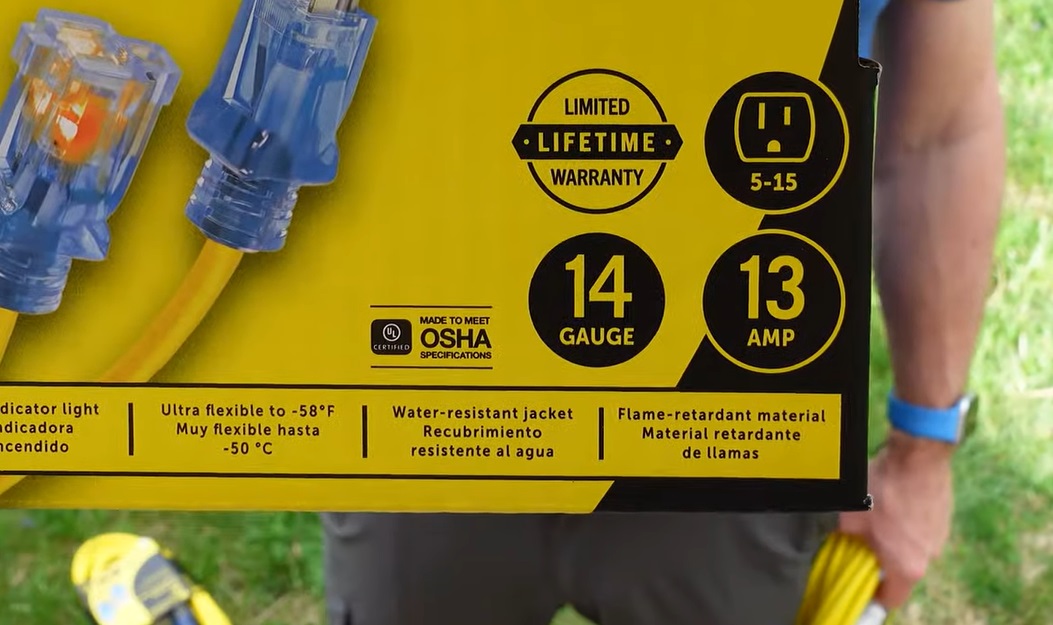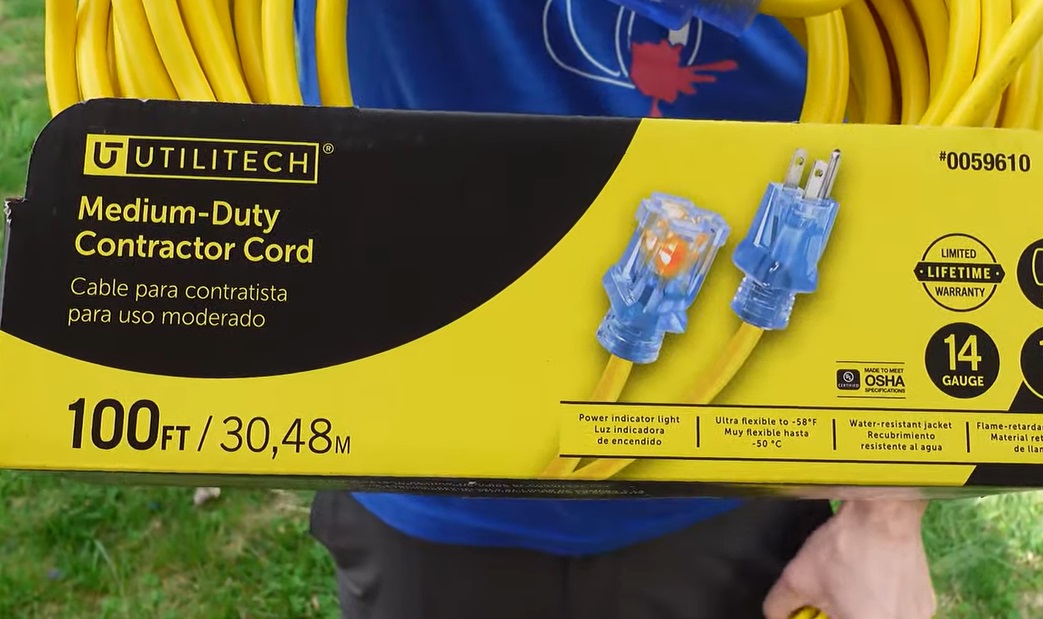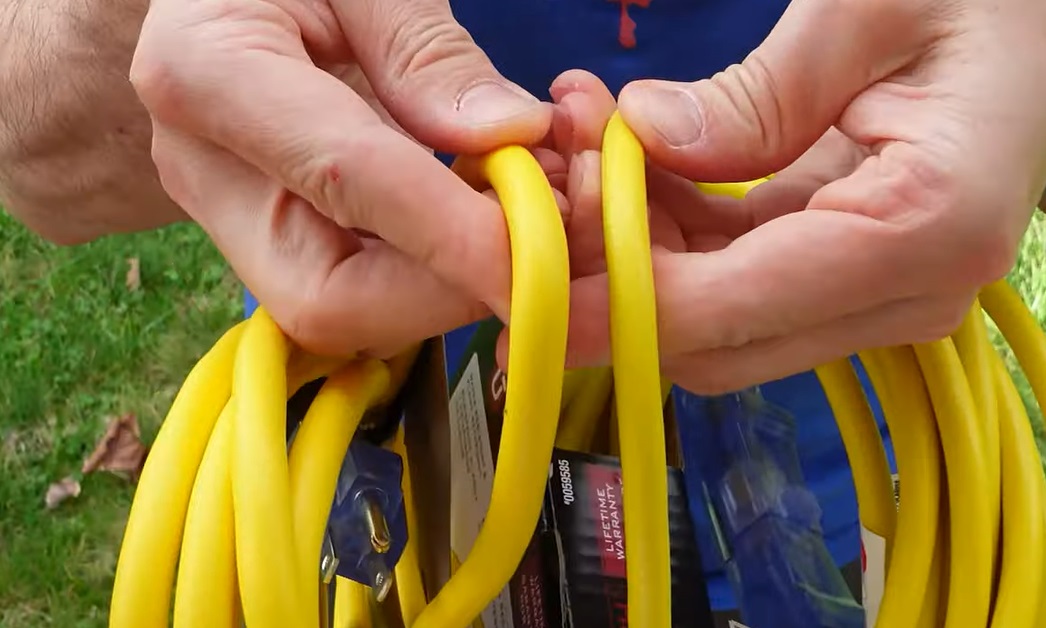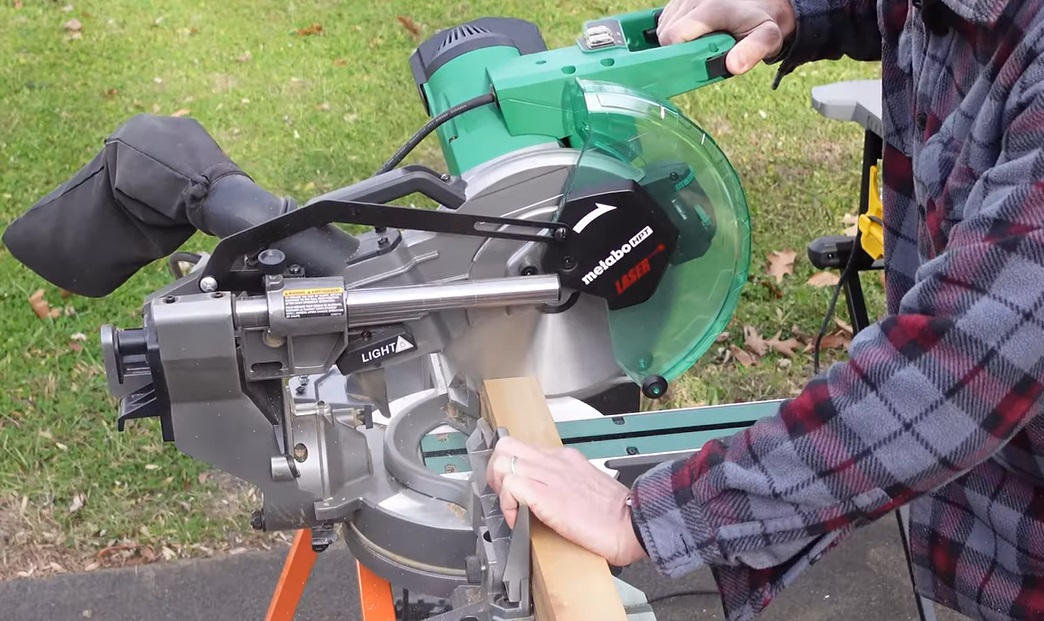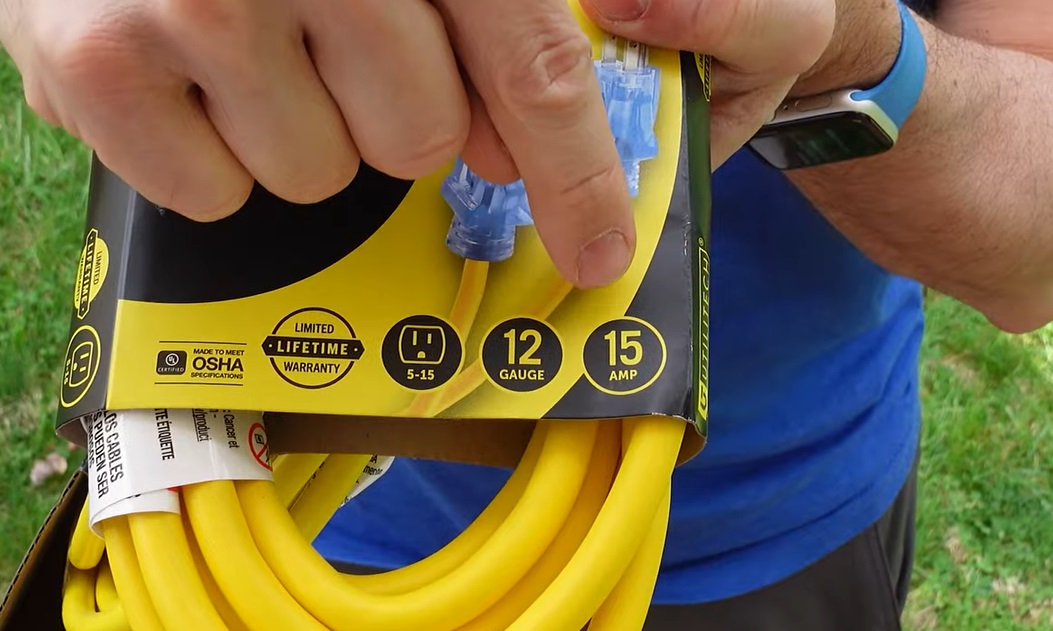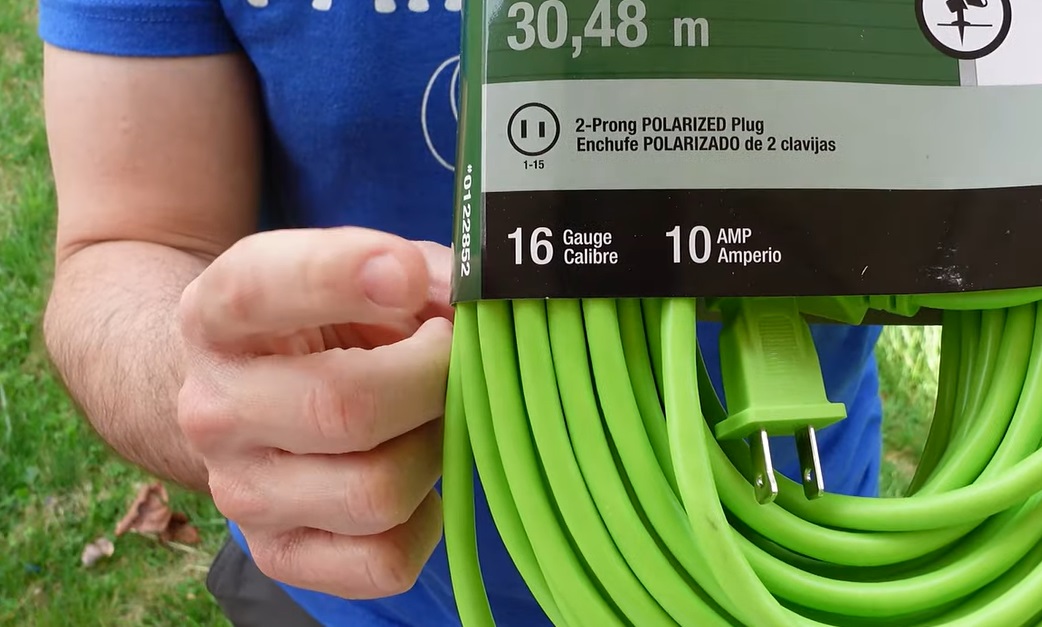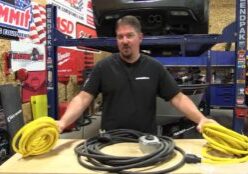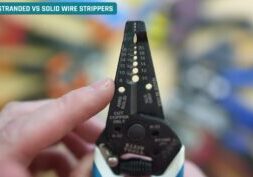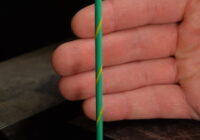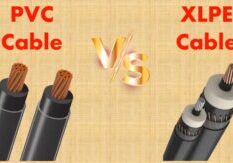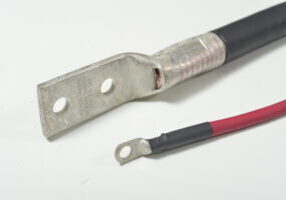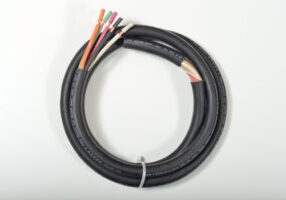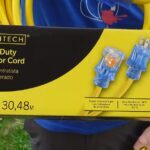
Oct 10, 2024
Outdoor Extension Cord Safety and Purchase Facts
Outdoor extension cords are vital tools for delivering power to various devices, especially in environments that are away from direct electrical outlets, such as in backyards, workshops, or on construction sites. When selecting the right outdoor extension cord, three crucial factors must be considered: the cord’s current capacity (usually linked to wire gauge), its amperage rating, and cost. Understanding the relationship between these elements helps ensure that you choose a cord that is safe, efficient, and economical for your needs.
This guide provides an in-depth look at outdoor extension cords based on current capacity, amperage ratings, and cost by gauge, so you can confidently select the right cord for your application.
1. Wire Gauge and Current Capacity
The thickness of the copper wire inside an extension cord, known as its gauge, plays a central role in determining the cord’s current capacity, which refers to how much electrical current (measured in amps) it can safely carry. Wire gauge is measured using the American Wire Gauge (AWG) system: a numerical scale in which smaller numbers correspond to thicker wires capable of carrying more current.
The most common outdoor extension cords typically range from 10 AWG (thickest) to 16 AWG (thinnest). For bigger gauges you can buy the portable cord separately, the remove the outer jacket and attach the plug yourself. Here is an overview of the current capacities for common gauges of outdoor extension cords:
a. 10 AWG (Heavy Duty)
- Current Capacity: Up to 30 amps
- Amperage Rating: Ideal for heavy-duty appliances such as air conditioners, electric chainsaws, table saws, and large power tools.
- Typical Use: Outdoor projects requiring a high current, such as powering construction equipment, welding machines, or industrial-grade tools.
- Cost: 10 AWG cords are typically the most expensive due to the high material cost and increased current capacity. Prices often range from $70 to over $100 for a 50-foot cord.
b. 12 AWG (Medium Duty)
- Current Capacity: Up to 20 amps
- Amperage Rating: Suitable for a wide range of power tools such as drills, compressors, and circular saws, as well as household devices like lawnmowers or small generators.
- Typical Use: Perfect for general-purpose outdoor work, such as gardening tools, smaller power tools, or home improvement projects.
- Cost: 12 AWG cords are less expensive than 10 AWG, but still higher priced due to their strength. You can expect to pay between $40 and $80 for a 50-foot cord.
c. 14 AWG (Light to Medium Duty)
- Current Capacity: Up to 15 amps
- Amperage Rating: Suitable for less demanding tools and devices such as leaf blowers, vacuum cleaners, or weed trimmers.
- Typical Use: Often used in residential settings where moderate power is needed, such as lawn maintenance, operating smaller power tools, or providing electricity to temporary lighting.
- Cost: 14 AWG cords offer a balance between affordability and capacity. They usually cost between $25 and $50 for a 50-foot length.
d. 16 AWG (Light Duty)
- Current Capacity: Up to 13 amps
- Amperage Rating: Best suited for low-power devices such as string lights, small fans, or charging outdoor electronics.
- Typical Use: Designed for lighter tasks around the yard or for low-demand electrical equipment.
- Cost: These are the most affordable outdoor extension cords, with prices typically ranging from $15 to $30 for a 50-foot length.
e. 18 AWG (Very Light Duty)
- Current Capacity: Up to 10 amps
- Amperage Rating: Suitable for very low-power devices like holiday lights, clocks, or other small electronics.
- Typical Use: Used primarily for short-term, light-duty tasks that don’t involve high-power tools or equipment.
- Cost: 18 AWG cords are the least expensive, generally costing under $15 for a 50-foot length.
Understanding Wire Gauge and Voltage Drop
Voltage drop refers to the reduction of voltage in a cord as electricity travels from the power source to the device. A thicker (lower gauge) cord minimizes voltage drop, making it ideal for heavy-duty tools or long distances (over 50 feet). Thinner cords (higher gauge) will experience a more significant voltage drop, which can harm appliances and lead to inefficiency.
Gauge and Length
As the length of an extension cord increases, its capacity to carry current diminishes. Therefore, longer cords require thicker wires to carry the same current safely. For example, a 16 AWG cord might work well for a 25-foot run but could be unsafe for a 100-foot run. Always factor in cord length when choosing the appropriate gauge.
Here is a quick reference chart for maximum safe extension cord lengths based on gauge and amperage:
| Gauge (AWG) | Max Amps | 25 ft | 50 ft | 100 ft |
|---|---|---|---|---|
| 10 | 30 | ✔ | ✔ | ✔ |
| 12 | 20 | ✔ | ✔ | ✔ |
| 14 | 15 | ✔ | ✔ | X |
| 16 | 13 | ✔ | ✔ | X |
| 18 | 10 | ✔ | X | X |
A checkmark (✔) indicates the cord can safely handle the load at the given length, while an “X” means it is not recommended.
2. Amperage Rating and Applications
The amperage rating of an extension cord refers to the maximum amount of electrical current it can carry safely. This rating must match or exceed the requirements of the device or tool you plan to power. A higher amperage rating translates to a greater capacity for carrying electrical loads without overheating or causing damage to connected equipment.
Choosing a cord with an insufficient amperage rating can result in overheating, damage to the tool, or even fire hazards. The following outlines the typical applications and matching amperage requirements for different tools:
a. High-Powered Tools (20-30 amps)
- Examples: Table saws, air compressors, portable generators, industrial heaters.
- Recommended Cord: 10 or 12 AWG extension cord with a 30-amp capacity for longer distances, especially if used continuously for extended periods.
b. Medium-Powered Tools (10-20 amps)
- Examples: Power drills, leaf blowers, circular saws, space heaters, and refrigerators.
- Recommended Cord: 12 or 14 AWG extension cord with a capacity of at least 15-20 amps, depending on the specific tool and the distance.
c. Low-Powered Tools (5-10 amps)
- Examples: String trimmers, small electric fans, garden lights, or TVs.
- Recommended Cord: 14 or 16 AWG cords with a capacity of around 10-13 amps are ideal for short-distance use with less power-demanding equipment.
d. Very Low-Powered Tools (Under 5 amps)
- Examples: Christmas lights, battery chargers, or USB devices.
- Recommended Cord: 16 or 18 AWG cords, which can easily handle lower amperage loads without the risk of overheating.
Important Safety Note:
It’s critical to avoid overloading an extension cord by plugging in devices that exceed its amperage rating. Overloading can cause the cord to overheat and potentially melt or catch fire.
3. Cost Analysis by Gauge
The cost of an outdoor extension cord varies significantly depending on the wire gauge, length, brand, and additional features such as weather resistance or built-in safety mechanisms. In general, cords with thicker gauges (lower AWG numbers) are more expensive because they require more copper, which is a costly material. The next upgrade would be to Type W cord which is meant for commercial uses on heavy duty construction sites, so these power cables require more resistance to wear and tear and voltage capacity.
Here is a general cost breakdown for outdoor extension cords based on their gauge and length:
a. 10 AWG (Heavy Duty)
- Cost: $70 to $150 for a 50-foot cord.
- Why So Expensive?: 10 AWG cords use more copper and insulation materials to handle high current loads. They are designed to withstand harsh conditions and provide reliable power over long distances without significant voltage drop.
b. 12 AWG (Medium Duty)
- Cost: $40 to $80 for a 50-foot cord.
- Why Mid-Range?: 12 AWG cords balance affordability with durability and capacity. They are widely used for mid-range power tools and outdoor work, making them one of the most popular choices for residential and professional use.
c. 14 AWG (Light to Medium Duty)
- Cost: $25 to $50 for a 50-foot cord.
- Why Economical?: 14 AWG cords are less expensive than 10 and 12 AWG cords due to the thinner wire. They are ideal for medium-load applications, offering flexibility and affordability for general outdoor tasks.
d. 16 AWG (Light Duty)
- Cost: $15 to $30 for a 50-foot cord.
- Why Budget-Friendly?: 16 AWG cords are commonly used for light-duty applications. Their thinner wires and lower current capacity make them the most cost-effective choice for powering smaller devices or shorter distances.
e. 18 AWG (Very Light Duty)
- Cost: Under $15 for a 50-foot cord.
- Why So Cheap?: These cords use minimal copper and are meant for low-power, occasional-use devices. They are affordable but limited in functionality.
Factors Affecting Cost:
- Length: Longer cords are more expensive because they require more materials.
- Brand: Premium brands may charge more due to better materials, superior weather resistance, or additional safety features.
- Special Features: Cords with built-in GFCI protection (ground fault circuit interrupter), water resistance, or high-visibility coatings will often command higher prices.
4. Additional Considerations
a. Weather Resistance
Outdoor extension cords are specifically designed to withstand harsh weather conditions. When shopping for a cord, ensure it has the following:
- UV-Resistant Jackets: Protection from the sun’s ultraviolet rays to prevent cracking or deterioration.
- Water Resistance: Necessary for outdoor use to avoid damage in rainy or wet conditions. Look for cords with waterproof ratings, such as those listed as SJTW (suitable for outdoor use).
- Cold-Weather Flexibility: Some cords are designed to remain flexible even in freezing temperatures.
b. Safety Features
Outdoor extension cords may include various safety features, such as:
- Built-in Surge Protection: To protect devices from power surges.
- Ground Fault Circuit Interrupter (GFCI): Automatically shuts off power if a ground fault is detected.
- Lighted Plugs: A convenient feature to indicate when the cord is live and receiving power.
c. Proper Storage
Outdoor extension cords should be stored properly to avoid damage. Always coil the cord to prevent tangling or kinking, and store it indoors when not in use to protect it from prolonged exposure to weather.
Conclusion
Choosing the right outdoor extension cord requires careful consideration of current capacity, amperage rating, and cost. The wire gauge directly influences how much current the cord can safely handle, and selecting the correct gauge is essential to prevent voltage drop or overheating. While thicker, lower-gauge cords are more expensive, they provide greater power-carrying capacity and are often necessary for heavy-duty applications. Conversely, thinner, higher-gauge cords are more affordable and suitable for light-duty tasks.
By understanding the relationship between wire gauge, amperage, and cost, you can select an outdoor extension cord that is both safe and suitable for your power needs, ensuring efficiency and safety for every project.

